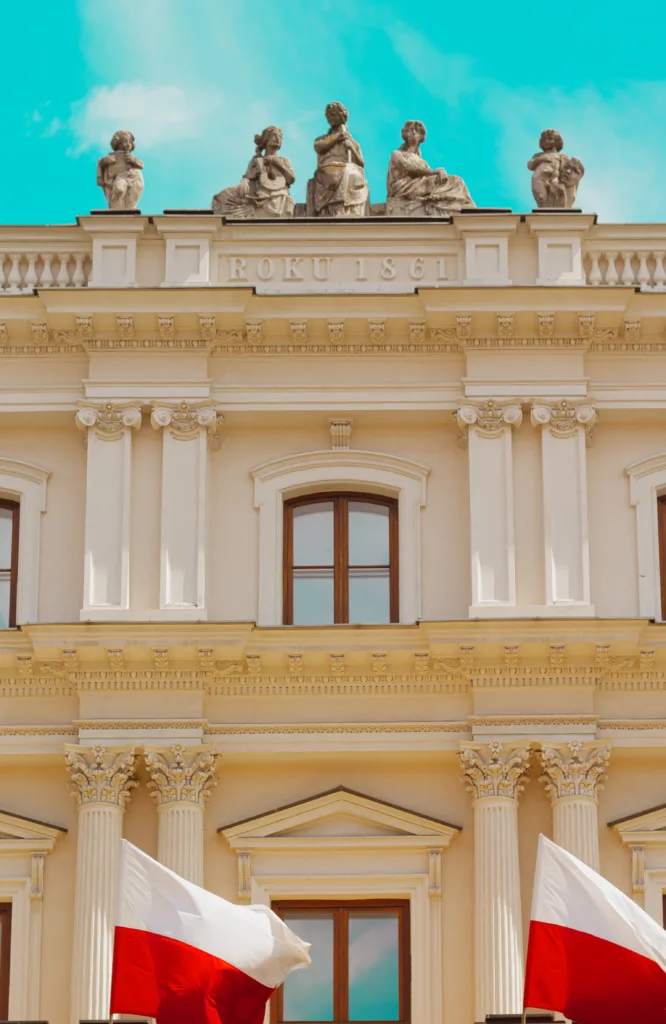Poland was a communist country in 1983. The Polish United Workers’ Party, which was aligned with the Soviet Union, had been in power since the end of World War II in 1945. The establishment of communist-ruled Poland began in 1944 and continued util 1948, when the government instituted a new constitution that officially established the Polish People’s Republic.
During the communist era, Poland was governed by a centralized planned economy that was controlled by the state. The government owned most of the means of production, and private enterprise was severely restricted. The Polish economy was heavily dependent on Soviet aid, and the country was a member of the Soviet-led Warsaw Pact military alliance.
However, by the early 1980s, there were growing signs of discontent in Poland. The economy was stagnating, and the government’s policies were increasingly unpopular. In 1980, the Solidarity trade union was formed, which quickly became a mass movement calling for political and economic reform.
The Polish government responded to the Solidarity movement with repression, including martial law and the arrest of its leaders. However, the movement continued to grow, and in 1989, Solidarity won a partially free election, leading to the peaceful fall of communism in Poland.
The post-communist era has been marked by significant economic reforms. In 1990, the Polish government introduced a radical economic reform program that included the privatization of state-owned enterprises and the introduction of a market-based economy. These reforms have led to the emergence of an entrepreneurial culture in Poland, and the country has experienced significant economic growth in recent years.
Poland was a communist country in 1983, but the seeds of political and economic reform were already being sown. The Solidarity movement challenged the government’s policies and ultimately led to the peaceful fall of communism in Poland. The post-communist era has been marked by significant economic reforms, and Poland has emerged as a thriving democracy and market economy.
When Was The Fall Of Communism In Poland?
The fall of communism in Poland occurred on 4 June 1989. This was the result of a partially free election in which the trade union Solidarity won in a landslide victory. The peaceful transition to democracy in Poland was a significant event in the history of Eastern Europe and marked the end of communist rule in the country. The victory of Solidarity in the election was a turning point in the struggle against communism, and it paved the way for the eventual collapse of the Soviet Union and the end of the Cold War.

What Happened In Poland In The 1980s?
In the 1980s, Poland experienced a major political crisis known as the Polish crisis of 1980–1981. This crisis was marked by the emergence of a mass movement called Solidarity, which challenged the rule of the ruling party, the Polish United Workers’ Party. Solidarity was a trade union movement that aimed to promote workers’ rights and challenge the authoritarian government.
The emergence of Solidarity was a significant challenge to the government, as it represented a clear threat to the party’s monopoly on power. The movement gained widespread support from the Polish people, including intellectuals, workers, and students.
The government responded by declaring martial law in December 1981, which resulted in the arrest of many Solidarity leaders and the suppression of the movement. However, despite the government’s efforts to crush the movement, Solidarity continued to exist underground, and its influence continued to grow.
The crisis in Poland was significant not only for the country but also for the wider world. It challenged the Soviet Union’s control over Eastern Europe and demonstrated that popular movements culd challenge authoritarian governments. Ultimately, the crisis in Poland contributed to the collapse of communism in Eastern Europe and the eventual reunification of Germany.
When Did Poland Switch To Capitalism?
Poland began its transition to a market-driven economy in 1989, following the collapse of communism in Eastern Europe. On January 1, 1990, the Polish government implemented a comprehensive set of economic reforms aimed at transforming the country’s centrally planned economy into a free market system. These reforms included the liberalization of prices, the privatization of state-owned enterprises, the establishment of a new currency, and the removal of trade barriers. This transition to capitalism was a major turning point in Poland’s economic history, and it paved the way for the country’s integration into the global economy.
Conclusion
Poland was indeed under communist rule in 1983. The Polish United Workers’ Party held power and aligned with the Soviet Union. However, the emergence of the Solidarity movement in the early 1980s challenged the ruling party and ultimately led to the fall of communism in Poland in 1989. The country underwent significant economic reform in the years following, leading to the development of an unexpected entrepreneurial culture. Today, Poland is a democratic republic with a market-oriented economy and a member of the European Union.
